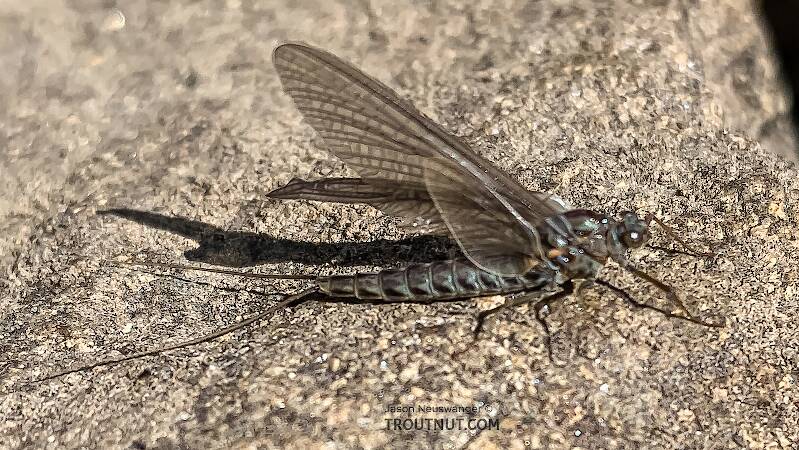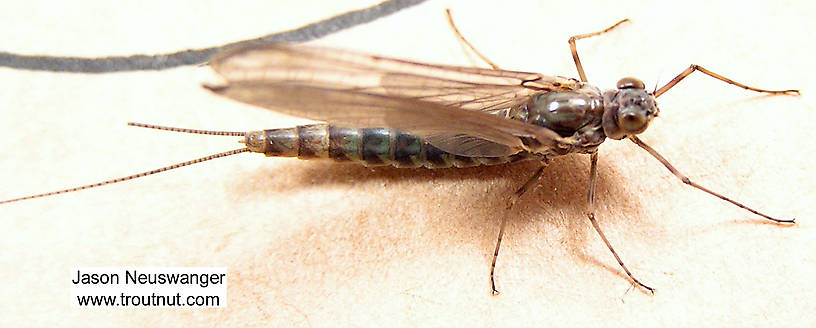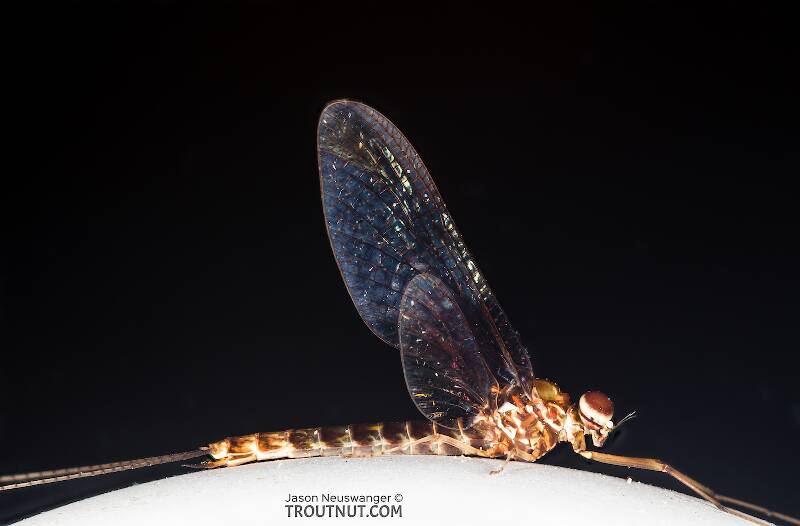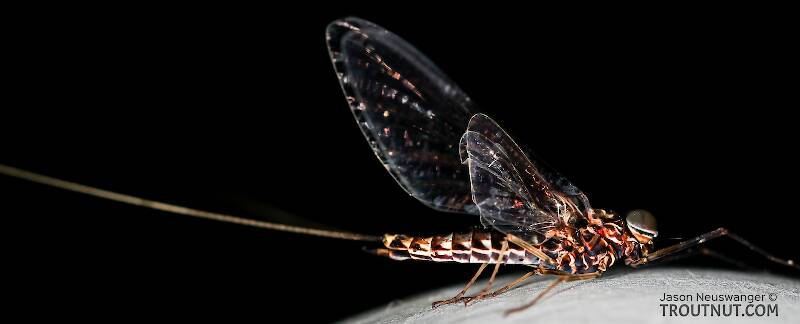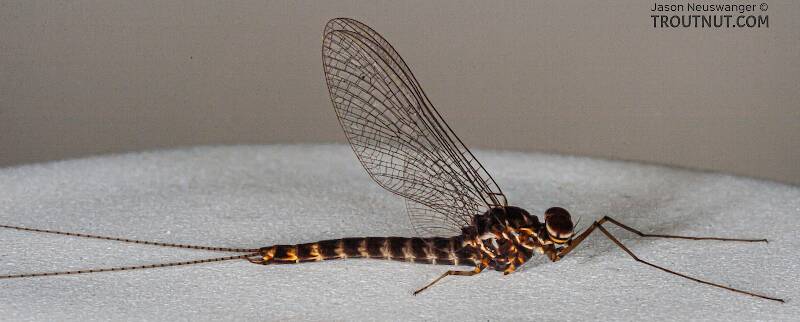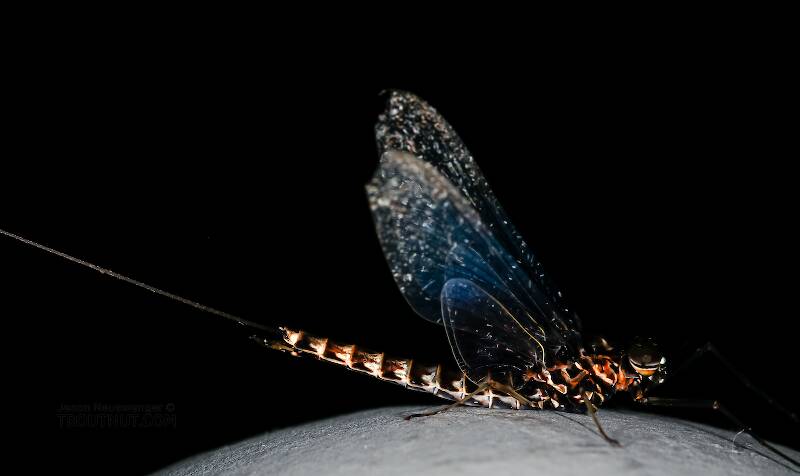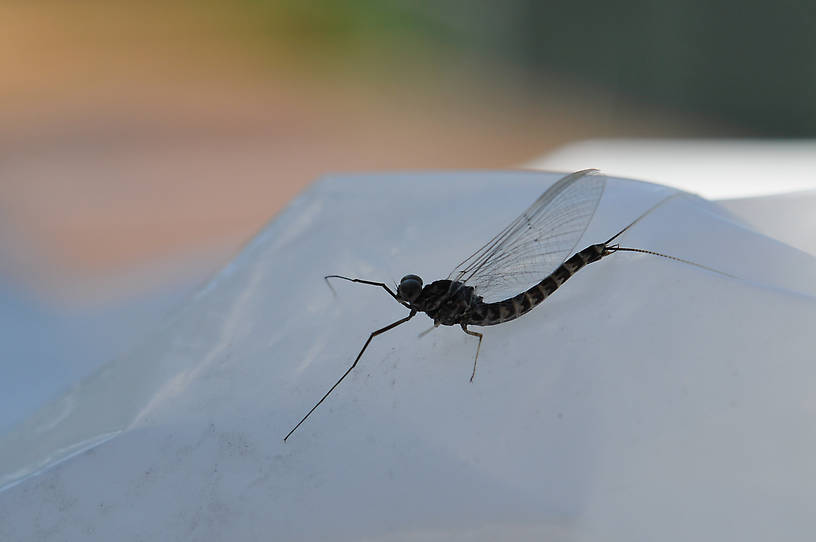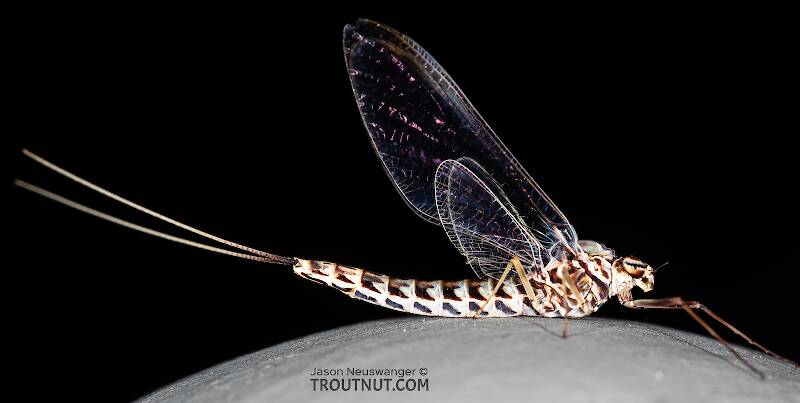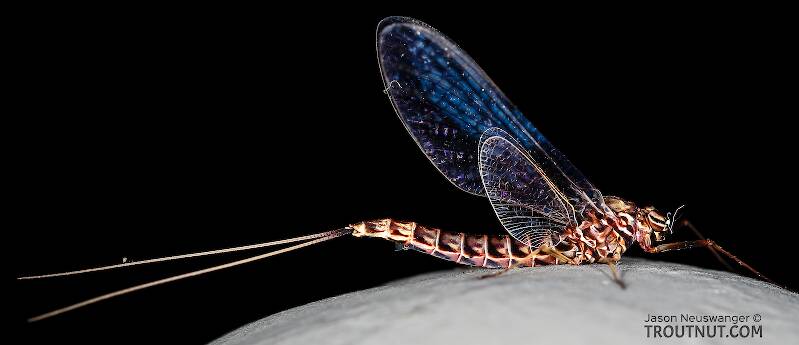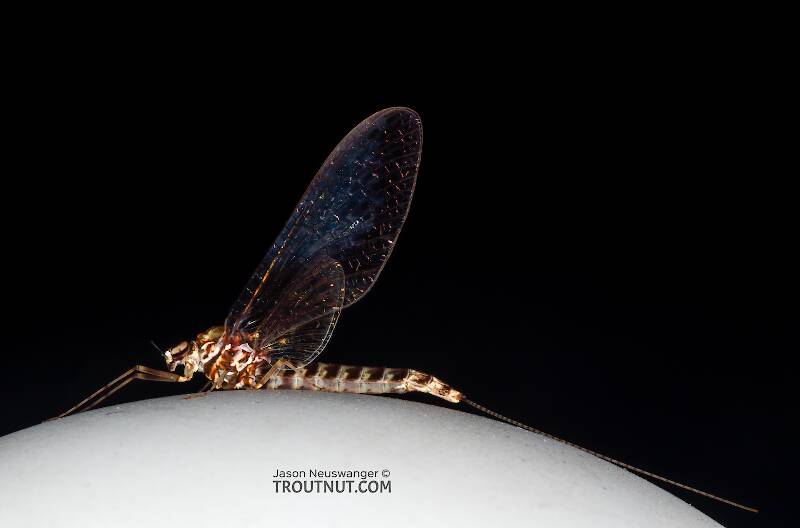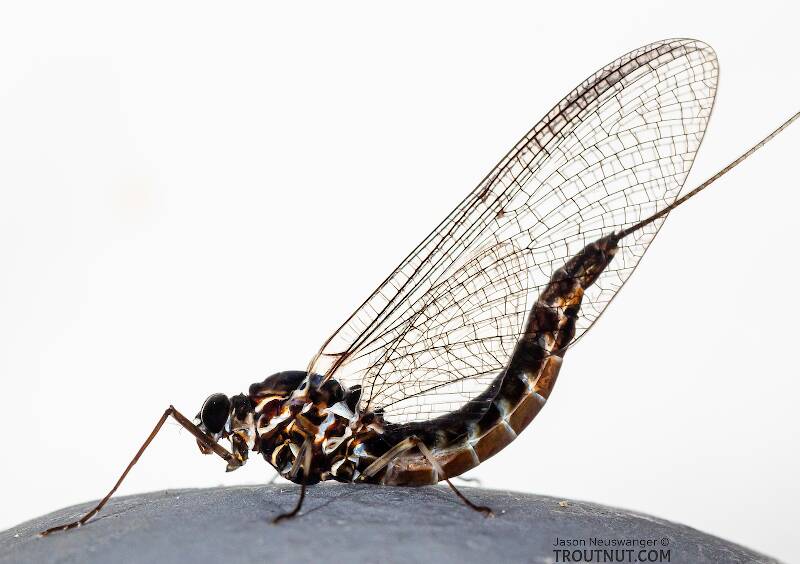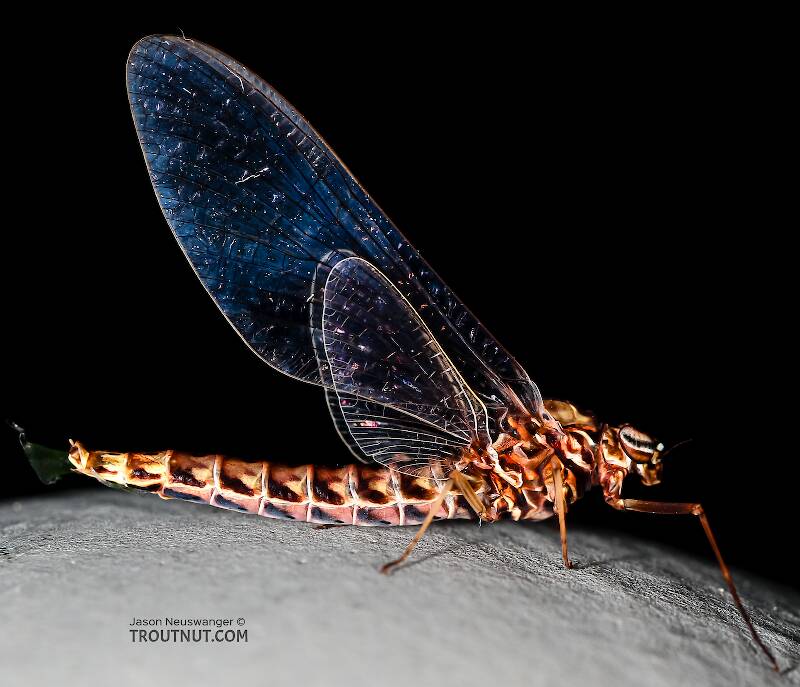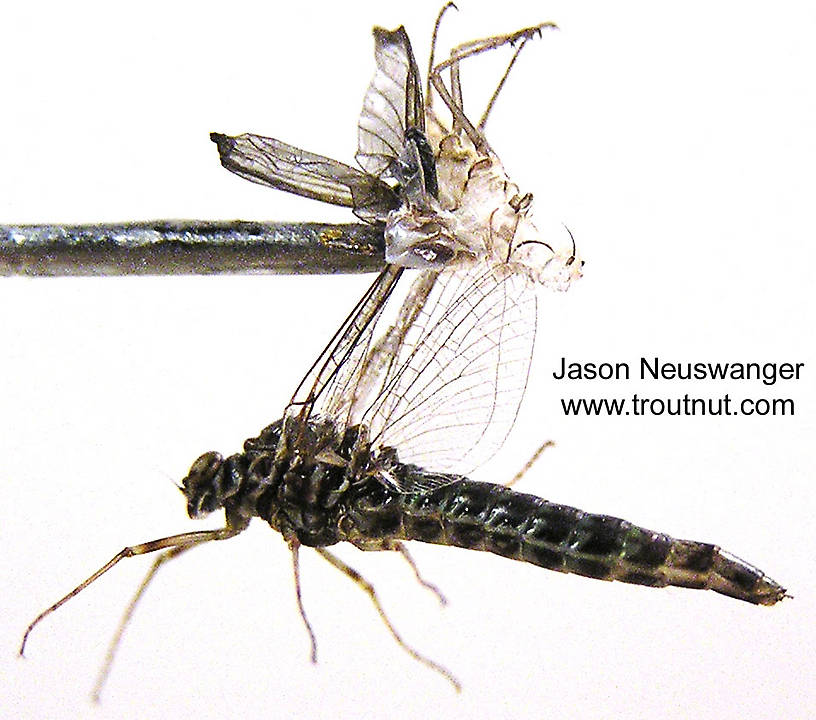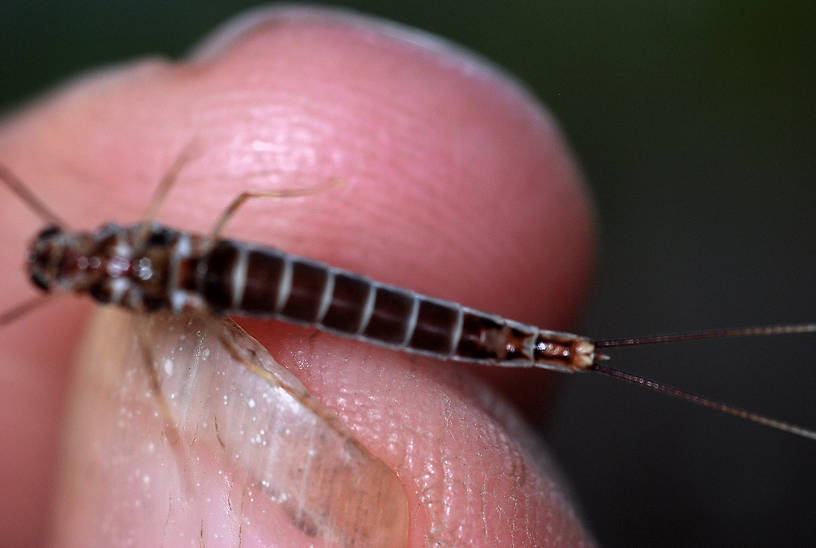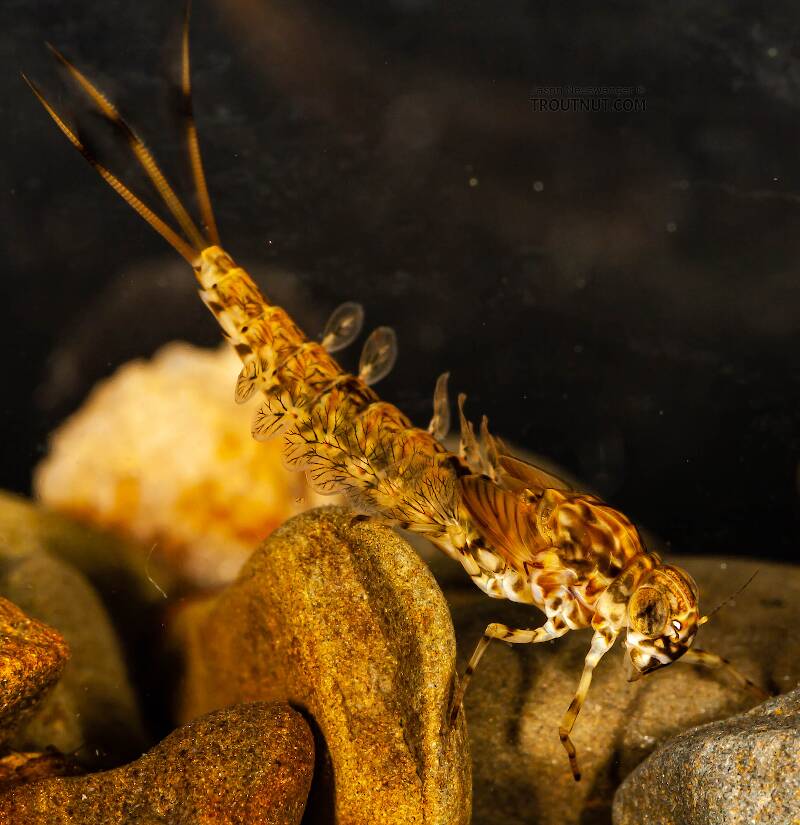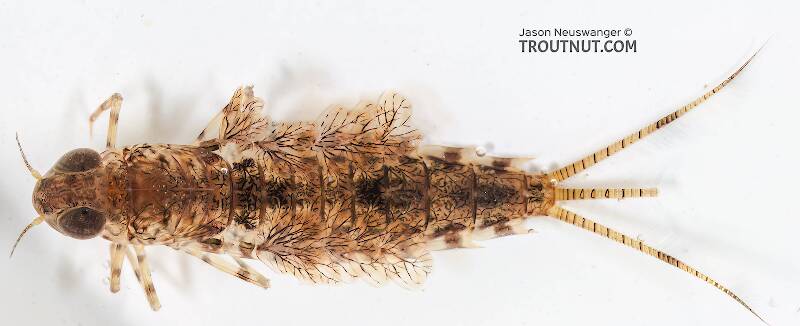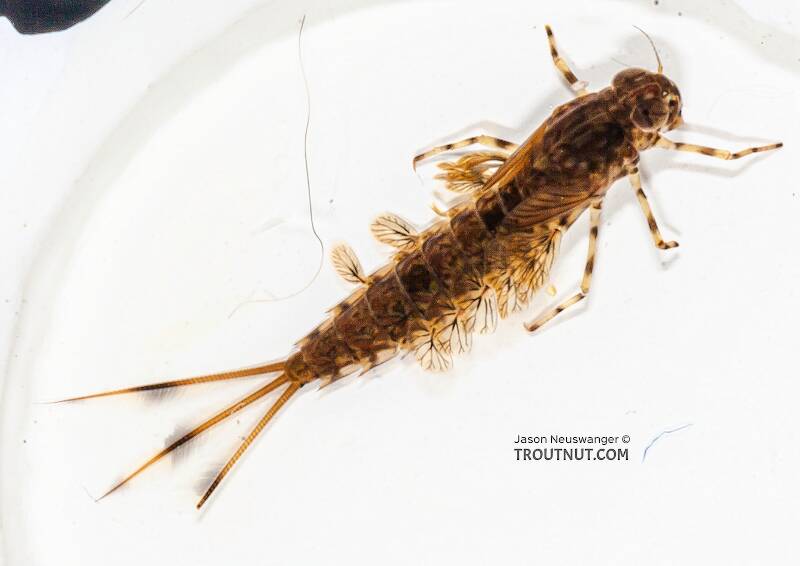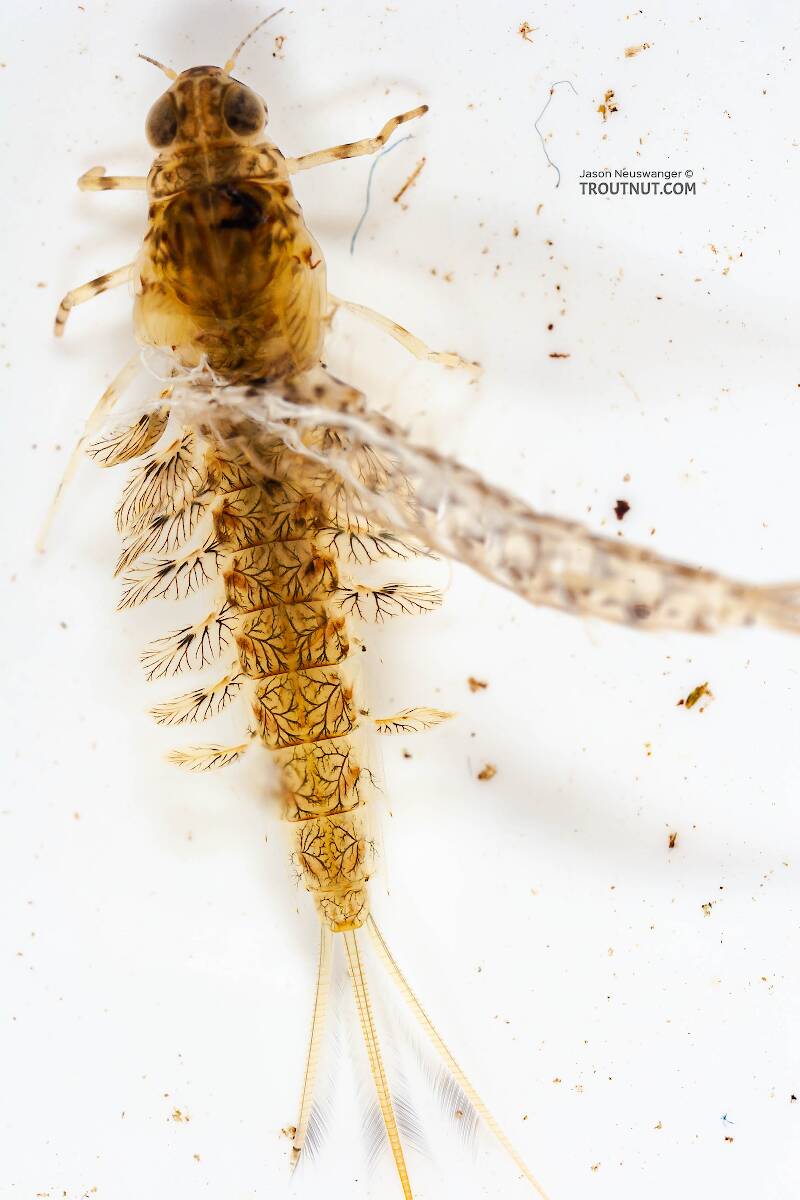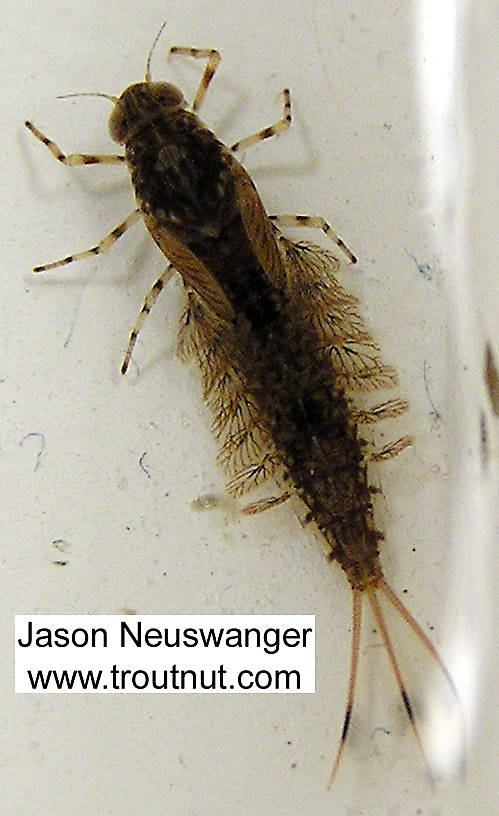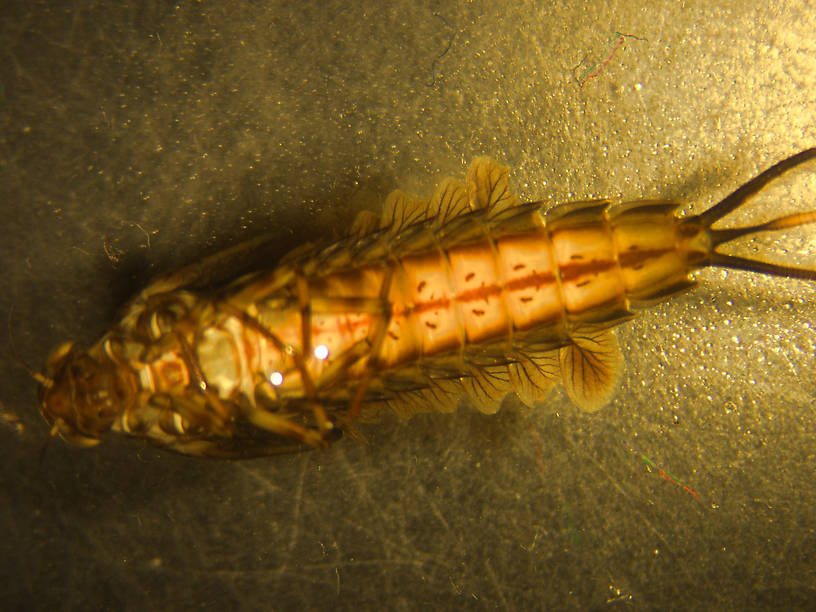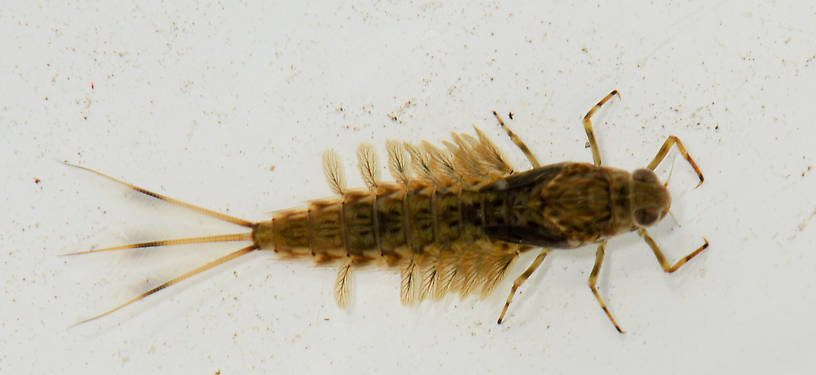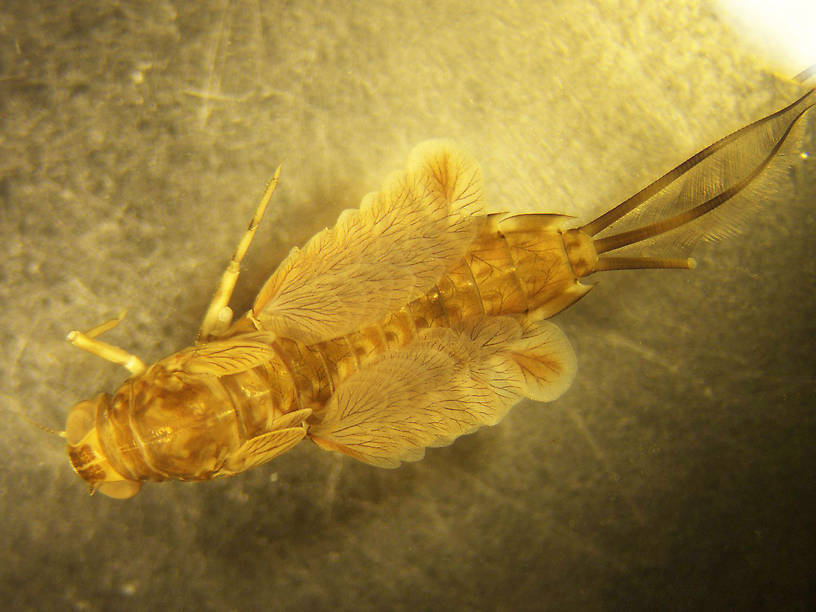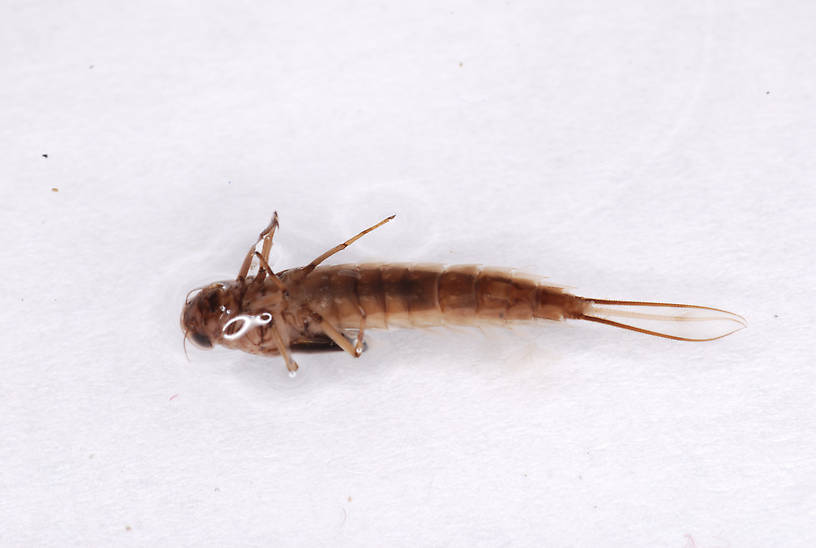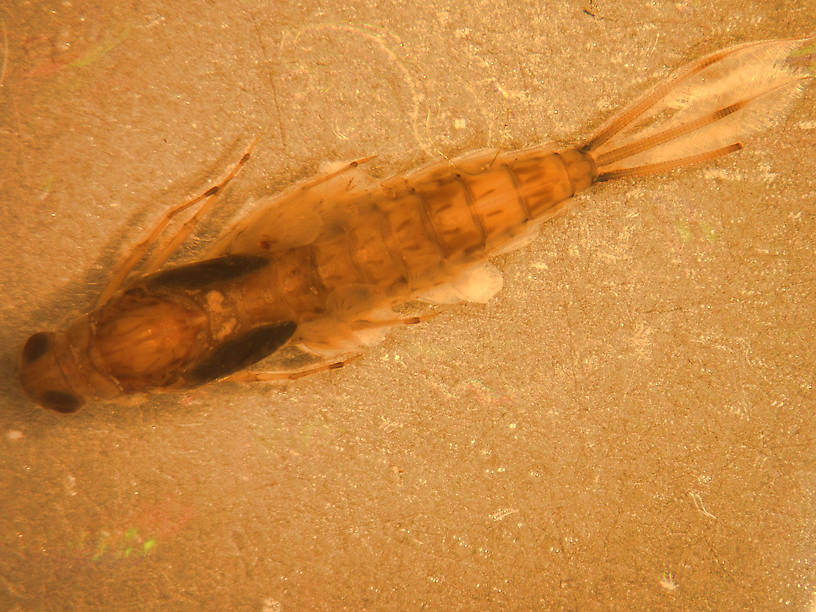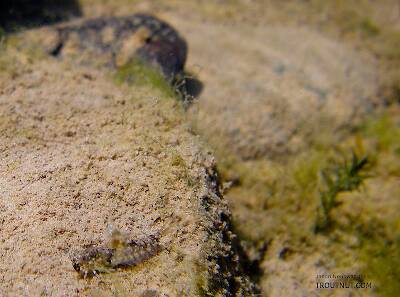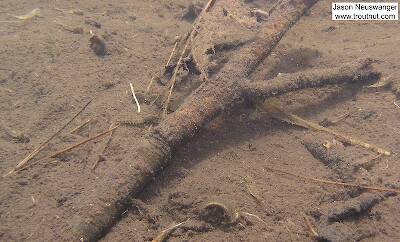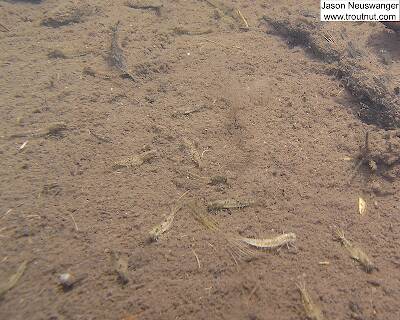
Blue-winged Olives
Baetis
Tiny Baetis mayflies are perhaps the most commonly encountered and imitated by anglers on all American trout streams due to their great abundance, widespread distribution, and trout-friendly emergence habits.
Featured on the forum

Troutnut is a project started in 2003 by salmonid ecologist Jason "Troutnut" Neuswanger to help anglers and
fly tyers unabashedly embrace the entomological side of the sport. Learn more about Troutnut or
support the project for an enhanced experience here.
Mayfly Genus Siphlonurus (Gray Drakes)
The important Eastern species are Siphlonurus quebecensis, Siphlonurus alternatus, and to a lesser extent Siphlonurus rapidus. All may produce fishable spinner falls, often with more than one species in the same swarm, but these are generally localized and minor events compared to the classic superhatches.
The main Western species, Siphlonurus occidentalis, is much more valuable. Its importance in the West is often compared to that of Isonychia in the East.
The main Western species, Siphlonurus occidentalis, is much more valuable. Its importance in the West is often compared to that of Isonychia in the East.
Where & when
Preferred waters: Slow, alkaline streams and lakes
In 215 records from GBIF, adults of this genus have mostly been collected during June (46%), July (27%), May (12%), and August (12%).
In 361 records from GBIF, this genus has been collected at elevations ranging from -30 to 11444 ft, with an average (median) of 804 ft.
Genus Range
Hatching behavior
There is some disagreement about exactly how Siphlonurus duns hatch. It is certain that they crawl out onto shore sometimes and hatch on the surface at other times, but which of these behaviors is more prominent is anybody's guess.
The time of emergence is also up in the air; most say it is in the morning, but there are reports of emergence in the afternoon and in the middle of the night, as well. One account suggests it is most common in the evening.
Authors generally agree that, regardless of hatching mode or time, the duns are the least important stage of this species. There are reports of trout feeding well on them, and this is sometimes attributed to the wind blowing the duns into the water.
In Mayflies Ted Fauceglia relays a detailed account by Dick Stewart of the hatching of Siphlonurus duns, quoted here in part:
They then emerge by swimming toward the surface and immediately taking flight. They pop through the surface film like miniature helicopters rising toward the open sky. We believe that molting takes place either very quickly or when the duns are high in the trees, for try as we might, we almost never can find a dun (day or night) despite the fact that we can locate hundreds of spinners.
Another point on which most agree is that Siphlonurus duns emerge from very shallow margins and backwaters, sometimes far from the trout in the main channel.
Spinner behavior
Time of day: Usually dusk in the East and Midwest, morning in the West, sometimes afternoon in cold weather
Nymph biology
Current speed: Slow
Substrate: Silt, vegetation
They are extremely adept swimmers.
Specimens of the Mayfly Genus Siphlonurus
2 Female Duns
5 Male Spinners
7 Female Spinners
10 Nymphs
3 Underwater Pictures of Siphlonurus Mayflies:
Start a Discussion of Siphlonurus
References
- Arbona, Fred Jr. 1989. Mayflies, the Angler, and the Trout. Nick Lyons Books.
- Caucci, Al and Nastasi, Bob. 2004. Hatches II. The Lyons Press.
- Fauceglia, Ted. 2005. Mayflies . Stackpole Books.
- Knopp, Malcolm and Robert Cormier. 1997. Mayflies: An Angler's Study of Trout Water Ephemeroptera . The Lyons Press.
- Schwiebert, Ernest G. 1955. Matching the Hatch. MacMillan Publishing Company.
- Swisher, Doug and Carl Richards. 2000. Selective Trout. The Lyons Press.
Mayfly Genus Siphlonurus (Gray Drakes)
Taxonomy
Species in Siphlonurus
Siphlonurus alternatusAdams
2
9
Siphlonurus autumnalis
3
10
Siphlonurus barbaroides
0
0
Siphlonurus barbarus
0
0
Siphlonurus columbianus
0
0
Siphlonurus decorus
0
0
Siphlonurus luridipennis
0
0
Siphlonurus marginatus
0
0
Siphlonurus marshalli
0
0
Siphlonurus mirus
0
0
Siphlonurus occidentalis
8
40
Siphlonurus phyllis
2
4
Siphlonurus quebecensisAdams
7
39
Siphlonurus rapidusAdams
0
0
Siphlonurus securifer
0
0
Siphlonurus spectabilis
0
0
Siphlonurus typicus
0
0
Species in Siphlonurus: Siphlonurus alternatus, Siphlonurus autumnalis, Siphlonurus barbaroides, Siphlonurus barbarus, Siphlonurus columbianus, Siphlonurus decorus, Siphlonurus luridipennis, Siphlonurus marginatus, Siphlonurus marshalli, Siphlonurus mirus, Siphlonurus occidentalis, Siphlonurus phyllis, Siphlonurus quebecensis, Siphlonurus rapidus, Siphlonurus securifer, Siphlonurus spectabilis, Siphlonurus typicus
3 species (Siphlonurus demaryi, Siphlonurus minnoi, and Siphlonurus noveboracana) aren't included.



